10/1/2022- IEM announces recipients of the 2022-23 IEM Doctoral Fellowship
This Fellowship, which is available only to students of IEM members, includes a $25,000 stipend plus $2,500 for professional development. Tuition and subsidized Graduate Assistant health plan are also covered. To be eligible for the Engineering in Medicine Doctoral Fellowship, students must meet the following criteria:
- PhD student in good standing with their program at the University of Minnesota
- Have completed all required coursework
- Is willing to serve as an IEM ambassador during IEM events (Inspire, the Annual Conference, IEM Innovation Week events, etc.)
- Have a dissertation topic that 1) Aims to transform an area of medicine through highly innovative research, and 2) Incorporates collaboration with at least one health/bio sciences faculty member and one engineering/physical sciences faculty member (one of whom is the student’s primary advisor)
Learn more at IEM here.
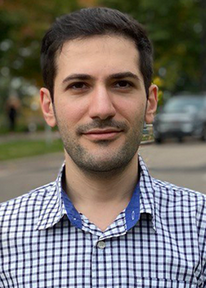
Ali Nouriani
Abstract: Home-Based Individualized Analysis of Postural Instability in PhD Patients
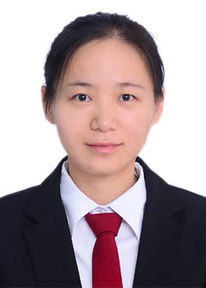
Lulu Ge
Abstract: Studying The Putative Effect Of Transcranial Magnetic Stimulation On Human Cognitive Control With Hyperdimensional Computing
9/26/2022- UMN Awarded $21M Grant for Clinical Study of the Effects of Vagus Nerve Stimulation on Organ Systems
Written By Roman Tyshynsky
University of Minnesota investigators are leading an intensive global clinical study that aims to establish the effects of vagus nerve stimulation on cardiovascular, metabolic, immune, and autonomic nervous systems. This $21M, 3-year study is funded by the National Center for Complementary and Integrative Health (NCCIH) as part of the NIH’s SPARC initiative (Stimulating Peripheral Activity to Relieve Conditions).
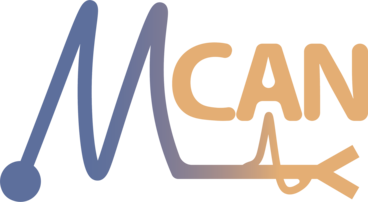
Vagus nerve stimulation (VNS) is currently FDA-approved for the treatment of epilepsy and depression. However, despite the extensive connection of the vagus nerve to different organ systems, the effects of VNS on multiple organs is currently unknown. During this study, subjects with VNS devices will undergo tests measuring the acute and chronic responses of cardiovascular, metabolic, immune, and autonomic nervous systems to determine the effects of various VNS stimulation parameters on these systems. Results will be made publicly available through SPARC’s online platform along with models, simulations, and visualization tools with the goal of optimizing VNS treatments for a variety of conditions.
Read the full article here
07/01/2022- 25 Years of Visible Heart® Laboratory Research & Training at the U of M
Written by Alyssa Dindorf, MPS, Communications Manager
Principal Investigator, Paul Iaizzo, PhD, was awarded a Bronzed Human Heart Model by Medtronic in late June during the 25th-anniversary celebration of the Visible Heart® Laboratories within the Department of Surgery at the University of Minnesota Medical School.
Read the full article here: https://med.umn.edu/surgery/news/25-years-visible-heartr-laboratory-research-training-u-m

03/01/2022- Rhonda Franklin awarded McKnight Presidential Endowed Professorship
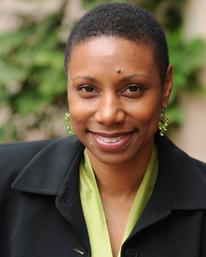
Abbott Professor for Innovative Education Rhonda Franklin has been awarded the McKnight Presidential Endowed Professorship. It is one of the highest honors for faculty at the University of Minnesota, and is a recognition of their academic and research accomplishments, and their contributions to the advancement of the University among its peers. Besides being an outstanding researcher in radio frequency electronics with collaborations that cross disciplinary boundaries, Franklin is also a committed educator, and especially engaged in and supportive of efforts to attract and retain underrepresented individuals to STEM disciplines within ECE, across the University, and her professional field.
Read the full article here: https://cse.umn.edu/ece/news/professor-rhonda-franklin-mcknight-presidential-endowed-professor
02/16/2022- Bethanie Stadler: Nanoheaters for Electronics and Organ Donation

Professor Bethanie Stadler invented microscopic nanowires that can be rapidly heated for use in nanoelectronics and potentially help make cryogenically-preserved organs available for donation.
What do nanoelectronics and organ preservation have in common? Both technologies can be advanced by super small nanoheaters. Thanks to research on nanoelectronics by Beth Stadler and Rhonda Franklin, professors of electrical and computer engineering, and research on cryoengineering by John Bischof, director of University's Institute for Mechanical Engineering in Medicine, we may one day see both nanoelectronics and organ preservation become reality.
Stadler has invented magnetic nanowires that generate heat very quickly in an alternating magnetic field. One application of these nano-scopic particles will hopefully be realized due to an NSF Engineering Research Center (ATP-Bio) that is led by John Bischof. The center is investigating ways to quickly and uniformly thaw cryogenically preserved organs so that the organs won’t be damaged during warming. By flooding the organs with a solution filled with magnetic nanoparticles before they are frozen, technicians could use alternating magnetic fields to safely heat the nanoparticles, and therefore the organs. “This could really be society-changing,” says Stadler, whose nanowires are one of many magnetic nanoparticles under study.
Stadler is working on several projects, including integrating nanowires into high-frequency circuits with Franklin as well as using magnetoelectric oxides to protect lasers from their own reflected power by allowing for one-way transmission of light. “I would love to see things we do in the lab go somewhere and actually impact products,” says Stadler. That’s why she regularly works with Tech Comm to see if her work should be patented and help get it into the hands of companies or investors who can bring it to market.
“Tech Comm staff have deep technical knowledge as well as a sophisticated understanding of what businesses need. This combination makes all the difference.” She credits Tech Comm with keeping up with her most advanced technical work and communicating it clearly to companies who might be interested in licensing it. They’ve helped her overcome commercialization setbacks and successfully license multiple inventions with Boston Scientific.
By leaning on Tech Comm for help with the business side of things, Stadler has more time to focus on what she loves: teaching and innovating. “I love working with students,” she says. “I don’t mind teaching the same classes every year —even Circuits 101—because to me it’s like doing Sudoku puzzles, which I quite enjoy, and happily so do most engineering students.”
Visit University Inventors to learn more about working with the Tech Comm office and find commercialization resources to help you increase your research impact.
01/27/2022- Advanced Cardiac Physiology & Anatomy course attracts industry and University students

The Advanced Cardiac Anatomy Course was held at the beginning of January 2022 and attracted 145 students, 110 of whom were from biomedical engineering companies in the metro and surrounding areas.
Elise Higgins, Senior Engineering Director of Systems Engineering at Medtronic, attended the course with members of her team and shared her positive experience with the course with IEM.
“In my 15 years in the field, this has been the best course I have ever taken. The unique course design was remarkable in seeing a full continuum: 1) Understanding a cardiac disease at the cellular level, 2) Appreciating engineering first principles, 3) Seeing the disease states through the eyes of a clinician, and 4) Hands-on application in the cadaver and Visible Heart lab. I appreciate your ability to offer this very unique course in person to foster networking and hands-on learning. Also, a special thank you for Dr. Iaizzo for organizing such a wonderful event. The passion he has for his work, the university, and educating others really shined bright all week. Looking forward to sharing the opportunity with additional team members next year as well as continued collaboration between the university and Medtronic!”
01/27/2021- New grant expands IEM’s Cancer Bioengineering Initiative

A multi-investigator team led by IEM member Dr. Paolo Provenzano, professor of Biomedical Engineering, was recently awarded an NIH grant to fund the Center for Multiparametric Imaging of Tumor Immune Microenvironments (C-MITIE). The proposed research aims at understanding the mechanisms by which tumors thwart immune responses, which will be used to guide the development of new cancer immunotherapies. The grant, funded by NIH’s National Cancer Institute, provides the team $6.7M over five years.
The C-MITIE team will use innovative microscopy and data analysis to determine the mechanics of glioblastoma (brain cancer) and pancreatic cancer immune microenvironments. Patients with these two cancers have some of the lowest survival rates of any cancer patients.
C-MITIE builds on long-standing imaging collaborations between UMN and the University of Wisconsin-Madison (UW-M) faculty. In addition, UMN’s Masonic Cancer Center and the UW-M’s Carbone Cancer Center have partnered to amplify the impact of C-MITIE by providing funding to support new collaborations involving both institutions.
This marks the second major successful cancer bioengineering grant in just the last six months that was supported by IEM’s Center Accelerator Program. Dr. David Odde, professor of Biomedical Engineering, recently received a $10M National Cancer Institute grant to advance the engineering of T-cells for immunotherapy against pancreatic and brain tumors. According to Odde, the two grants will complement each other well, as the U54 will provide a wealth of new imaging-based data that will contribute to the P01’s’s cell and tumor computational models.
01/11/2021- MIN-Corps MVP Challenge
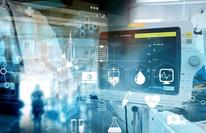
MIN-Corps, the UMN site for the National Science Foundation I-Corps program, has awarded $91,000 to 28 projects ($1,000–$5,000 each) for their MIN-Corps MVP Challenge prototyping awards. Awardees will also have access to monthly coaching from a mentor team and prototyping skills workshops.
Proposals submitted by members of the Institute for Engineering in Medicine (IEM) accounted for nearly half of the $91,000. In particular, the IEM Earl E. Bakken Medical Devices Center had six projects that were awarded, and IEM labs received four awards, two of which are associated with the ATP-Bio Engineering Research Center.
For more information visit: https://mincorps.umn.edu/programs